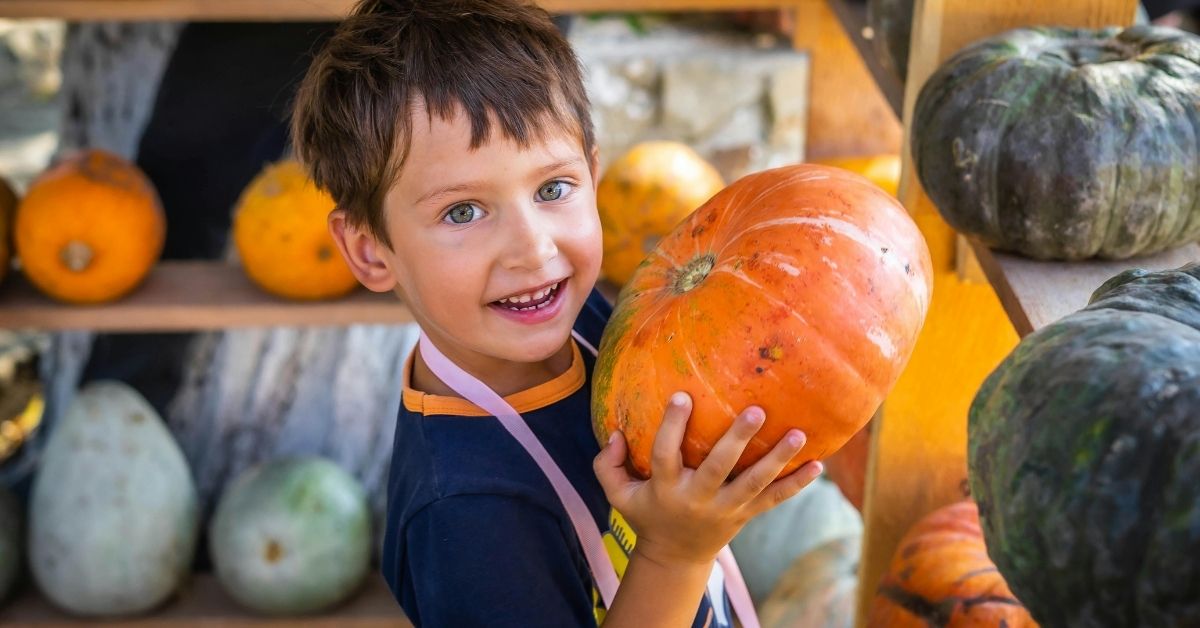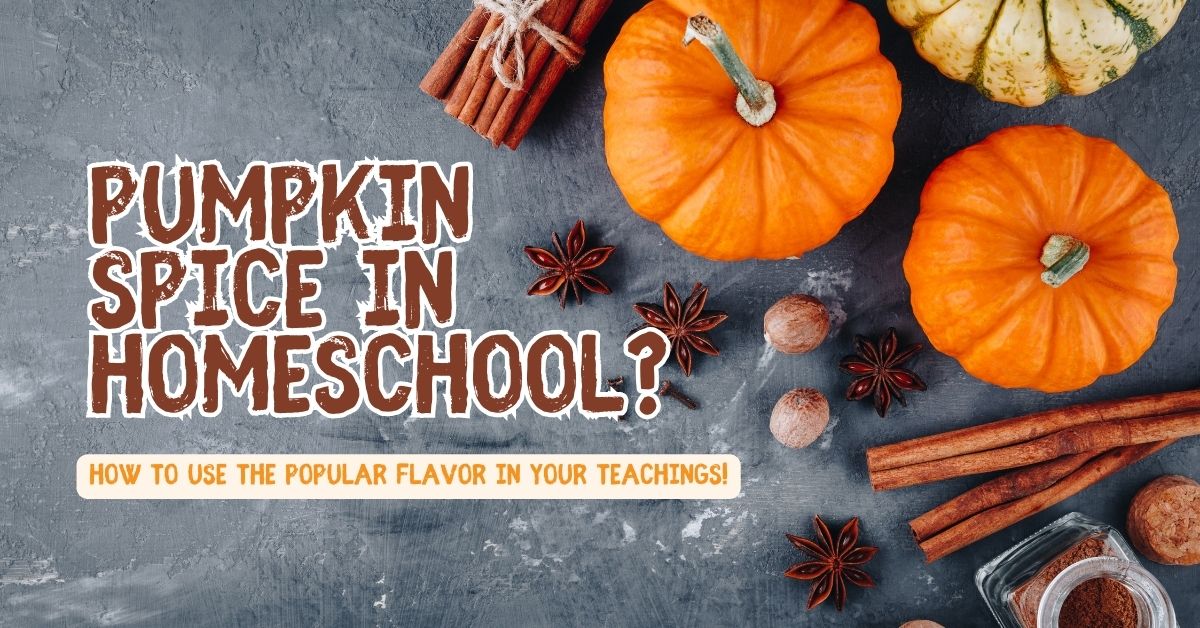As the leaves begin to turn and a crispness fills the air, the familiar scent of pumpkin spice seems to be everywhere. It’s in our coffees, our baked goods, and even our home fragrances. This beloved autumn flavor can be more than just a seasonal treat; it can be a powerful tool in your educational toolkit.
By weaving the theme of pumpkin spice into your lessons, you can create engaging, multi-sensory learning experiences that capture the magic of the season. This guide will explore a variety of pumpkin spice homeschool activities that bring fall-themed lessons to life, turning your home into a vibrant and creative learning environment.
The beauty of homeschooling is the flexibility it offers. You can adapt your curriculum to your child’s interests and the world around them. What better way to connect with the season than by embracing one of its most popular symbols? From science experiments in the kitchen to creative writing prompts inspired by a warm mug of a pumpkin-spiced drink, the possibilities are vast.
We will cover ideas for every core subject, showing you how to infuse your academic schedule with a dash of autumn fun. Prepare to make this fall a season of memorable and effective learning.
The Science Of Spice: Kitchen Chemistry And Botany
The kitchen is a fantastic laboratory, and pumpkin spice provides the perfect subject for a hands-on science lesson. The classic blend—cinnamon, nutmeg, ginger, cloves, and allspice—is a gateway to exploring botany, chemistry, and even human biology. By deconstructing the spice blend, you can teach your children where these flavors come from and the scientific principles that make them so appealing.
Start by examining each spice individually. You can create a sensory station where your child can see, smell, and touch each one. This leads naturally into a botany lesson.
- Cinnamon: Explain that cinnamon comes from the inner bark of several tree species from the genus Cinnamomum. Show them pictures of the cinnamon tree and how the bark is harvested and rolled into quills (cinnamon sticks). You can even try grinding your own cinnamon sticks to compare the aroma to pre-ground powder.
- Nutmeg and Mace: These two spices come from the same fruit of the Myristica fragrans tree. Nutmeg is the seed, while mace is the lacy, reddish covering around the seed. This is a great example of how one plant can produce multiple products.
- Ginger: This pungent spice is the rhizome, or underground stem, of the Zingiber officinale plant. You can purchase a fresh ginger root from the store to show your child its unique shape and texture. This is an excellent opportunity to discuss different parts of a plant and their functions.
- Cloves: Cloves are the aromatic dried flower buds of the Syzygium aromaticum tree. Their unique shape makes them easy to identify. You can discuss the life cycle of a flowering plant and how cloves are harvested before the flowers open.
- Allspice: Despite its name, allspice is not a blend. It is the dried, unripe berry of the Pimenta dioica tree. It was named allspice because it was thought to taste like a combination of cinnamon, nutmeg, and cloves.
Once you’ve explored the origins, move on to some kitchen chemistry. A simple activity is to mix your own pumpkin spice blend. Provide your children with the individual spices and a recipe, and let them measure and mix. This practices measuring skills and fractions while creating a tangible product. You can then use this blend to explore concepts like solubility.
Have them stir the spice mix into different liquids—hot water, cold water, oil, and milk—to observe how well it dissolves or suspends. This simple experiment introduces ideas about solutions, suspensions, and the role of temperature in chemical reactions.

Pumpkin Spice Homeschool Activities For Math And Logic
Fall themes offer a wonderful backdrop for making math more engaging. Pumpkins, spices, and autumn treats can be used to teach a wide range of mathematical concepts, from basic counting to more complex problem-solving. The key is to connect abstract numbers to tangible, seasonal objects. For younger learners, a trip to a pumpkin patch or even the local grocery store can become a living math lesson. Have them count the pumpkins, sort them by size or color, and estimate their weight. You can bring a small scale to check their estimates, introducing the concepts of mass and measurement.
Back at home, use pumpkin seeds for counting, grouping, and simple addition and subtraction problems. For a more advanced activity, have your children carve a pumpkin and then estimate the number of seeds inside. Once they’ve cleaned and counted the seeds, they can calculate the difference between their estimate and the actual number. This process involves estimation, counting, and subtraction. You can extend this into a lesson on multiplication by having them group the seeds into sets of ten and count the groups. For a statistics project, you could weigh the pumpkin before and after carving to calculate the weight of the part you removed. You could also measure the pumpkin’s circumference and diameter, introducing basic geometry.
Baking pumpkin-themed treats is another fantastic way to incorporate math. Following a recipe for pumpkin bread or cookies requires precise measurement of ingredients, which reinforces fractions and units of measurement (cups, teaspoons, tablespoons). You can easily scale a recipe up or down to feed more or fewer people, which provides a practical application for multiplication and division. For example, ask your child, “This recipe makes 12 muffins. How would we change the ingredients if we only wanted to make 6?” or “What if we needed to make 24 for a party?” This type of real-world problem-solving helps solidify mathematical understanding far more effectively than a worksheet alone.
Spicing Up Language Arts: Reading And Creative Writing
The cozy feeling associated with pumpkin spice is the perfect inspiration for language arts. Autumn is a season of change and reflection, providing rich material for reading, writing, and storytelling. You can curate a fall-themed reading list that matches your child’s reading level.
For younger children, this might include picture books about pumpkins, changing seasons, or autumn holidays. For older students, you could explore classic poems by Robert Frost or Emily Dickinson that capture the essence of fall. Reading aloud together, perhaps with a warm pumpkin-spiced drink in hand, can create a cherished homeschool tradition.
After reading, you can engage in discussions about the themes, characters, and imagery in the text. This builds reading comprehension and critical thinking skills. Encourage your child to identify sensory details in the writing—what did the author describe that you could see, hear, smell, taste, or touch? This exercise in literary analysis can then be turned into a creative writing prompt.
- Descriptive Writing: Ask your child to write a detailed paragraph describing the experience of drinking a pumpkin spice latte or eating a piece of pumpkin pie. Encourage them to use all five senses. What does it look like? What sounds do they associate with it? How does it smell and taste? What is the texture?
- Story Prompts: Provide a story starter, such as “The old pumpkin at the back of the patch started to glow…” or “I took a sip of the mysterious pumpkin spice potion and suddenly…” Let their imagination run wild and see what kind of creative tales they can weave.
- Poetry: Autumn is a classic subject for poetry. Introduce different forms of poetry, like haikus, acrostic poems, or free verse. They could write a haiku about a falling leaf or an acrostic poem using the word “PUMPKIN.”
- Recipe Writing: For a practical writing exercise, have your child write out the instructions for making their favorite pumpkin-themed treat. This teaches them the importance of clear, sequential, and concise writing. They need to list the ingredients and then provide step-by-step instructions that are easy for someone else to follow.
These activities not only improve writing skills but also encourage self-expression and creativity. By linking writing to a pleasant, multi-sensory experience, you can help your child develop a positive association with the writing process.
History And Geography Through The Spice Trade
The story of pumpkin spice is not just one of flavor; it is a story of global exploration, trade, and cultural exchange. The spices in the blend—cinnamon, nutmeg, cloves, and ginger—were once incredibly rare and valuable commodities. Their pursuit fueled empires, sparked wars, and led to the discovery of new lands. This makes pumpkin spice a fascinating entry point into lessons on world history and geography.
You can use a world map to trace the origins of each spice. Mark the Spice Islands (the Maluku Islands in Indonesia) for nutmeg and cloves, Sri Lanka and Southeast Asia for cinnamon, and China and India for ginger.
This geographical exploration naturally leads to a discussion of the spice trade. Explain how, for centuries, Arab traders held a monopoly on the spice routes, keeping the sources of these valuable goods a secret. This drove European explorers like Vasco da Gama and Christopher Columbus to seek new sea routes to the East, an endeavor that reshaped the world map and led to the Age of Discovery.
You can discuss the immense challenges these sailors faced and the profound impact their voyages had on global politics and economies. For older students, this can be a deep dive into the history of colonialism and the complex, often brutal, history of how these spices made their way to the West.
The pumpkin itself has its own rich history. Native to North America, pumpkins and other squashes were a staple food for many Indigenous peoples long before European settlers arrived. You can explore the history of agriculture in the Americas and how Native Americans cultivated pumpkins, corn, and beans together in a system known as the “Three Sisters.”
This method of companion planting is a brilliant example of early agricultural science, as the three plants mutually support each other. The corn provides a stalk for the beans to climb, the beans fix nitrogen in the soil to fertilize the corn and squash, and the large leaves of the squash plant provide ground cover that retains moisture and suppresses weeds. When European colonists arrived, they learned how to grow and cook pumpkin from Native Americans, and it became a crucial food source for their survival, particularly during their first harsh winters. This history connects the pumpkin spice theme directly to early American history and the story of the first Thanksgiving.
Art, Music, And Movement Inspired By Autumn
Autumn is a feast for the eyes, with its brilliant palette of red, orange, and gold. This natural beauty provides endless inspiration for art projects. A simple nature walk can become an opportunity to collect leaves, acorns, and pinecones for various crafts.
- Leaf Rubbings: Place leaves under a thin piece of paper and rub the side of a crayon over them to reveal their intricate vein patterns. You can use autumn colors to create a beautiful collage.
- Pumpkin Painting: Move beyond carving and use pumpkins as a three-dimensional canvas. Children can paint faces, patterns, or entire scenes on their pumpkins using acrylic paints.
- Spice Painting: Mix pumpkin pie spice with a small amount of water or glue to create a fragrant, textured paint. This adds a sensory dimension to your child’s artwork.
- Nature Sculptures: Use clay or play-doh as a base and have your children create sculptures using the natural items they collected on their walk.
Music can also be tied to the season. You can explore classical pieces that evoke the feeling of autumn, such as Vivaldi’s “Autumn” from The Four Seasons. Listen to the music together and ask your child what images or feelings it brings to mind. Does the tempo or mood of the music change? What instruments can they hear? This is a wonderful way to introduce music appreciation. You could also create your own autumn-themed playlist with songs that mention fall, harvesting, or changing seasons.
Don’t forget to get moving. Physical activity is a crucial part of a balanced homeschool day. You can create a fall-themed obstacle course in your backyard that involves jumping over pumpkins, zig-zagging around trees, and raking leaves into a pile to jump in. A trip to a local farm with a corn maze is another excellent way to combine physical activity with problem-solving and teamwork. Even a simple game of tag can be renamed “Falling Leaves” to fit the seasonal theme. Integrating movement helps children burn off energy, improves focus for more sedentary tasks, and makes learning more dynamic and fun.
A Holistic And Engaging Educational Experience
By incorporating these pumpkin spice and autumn-themed activities into your homeschool routine, you create a holistic and engaging educational experience. Learning becomes less about memorizing facts from a book and more about exploring the world with curiosity and joy.
This approach demonstrates the incredible adaptability of homeschooling, allowing you to tailor your children’s education to the rhythm of the seasons. As you lean into these creative teaching ideas, you are not just covering academic subjects; you are building lasting memories and fostering a genuine love of learning. For more practical resources and innovative homeschool lesson plans, be sure to explore the other articles on our blog.





